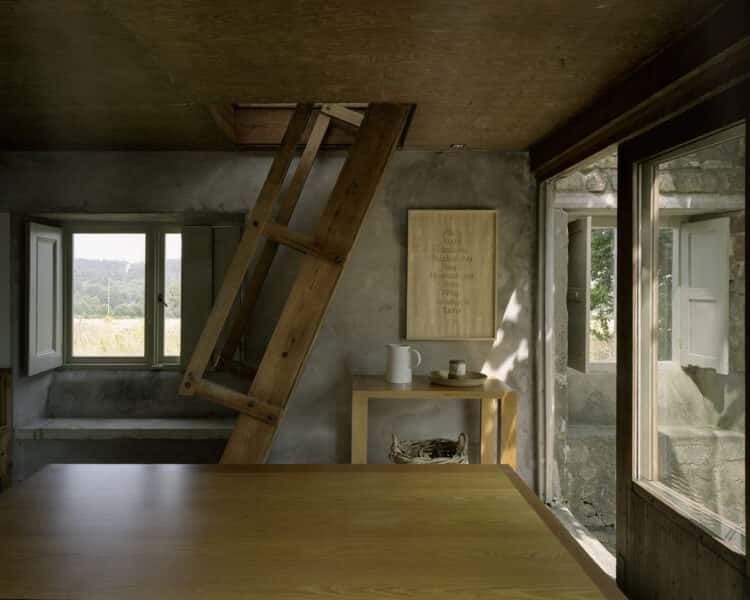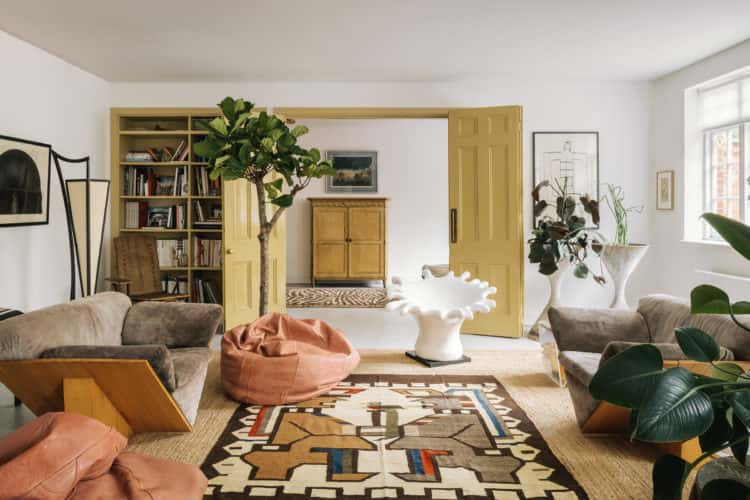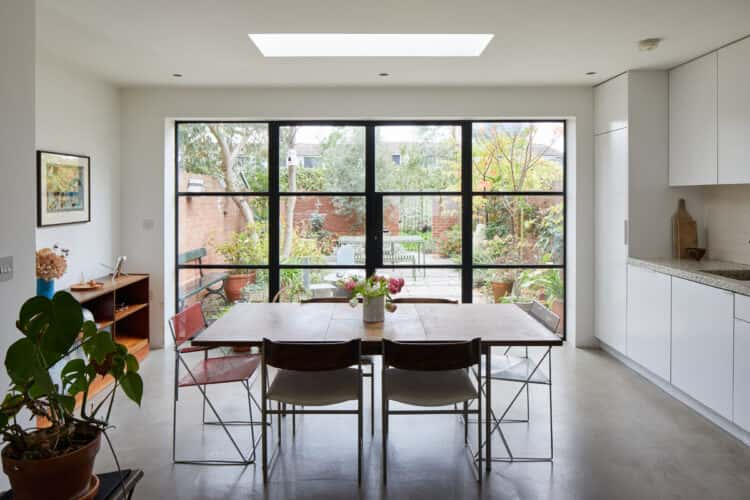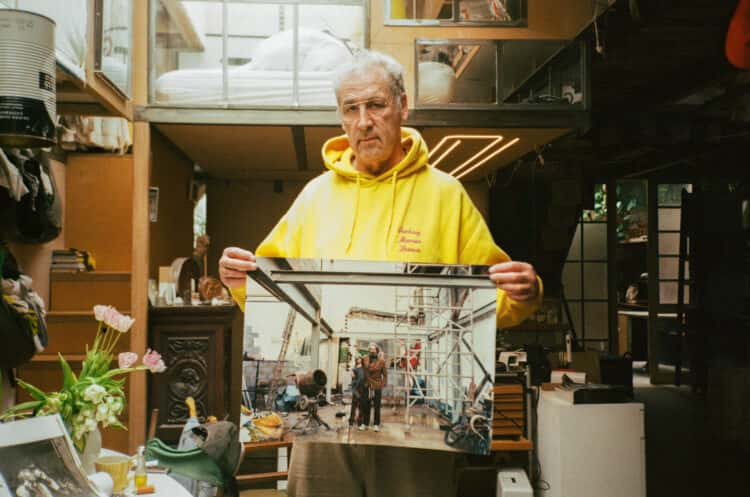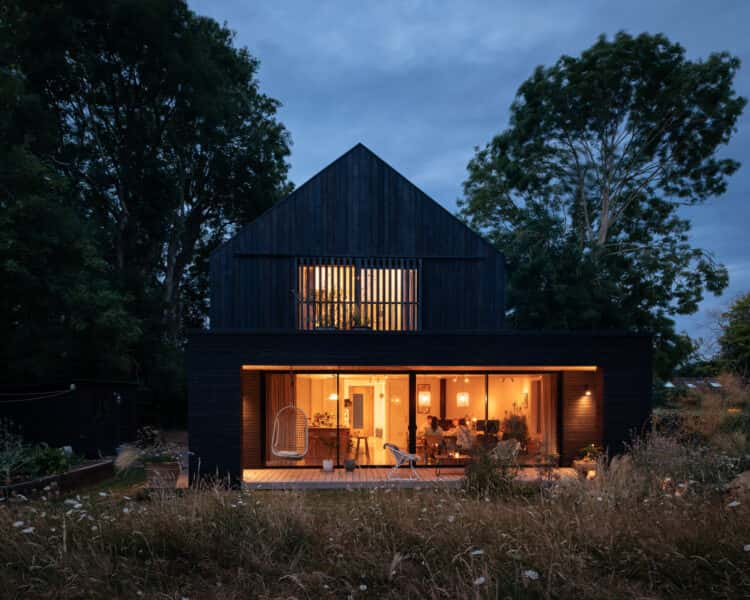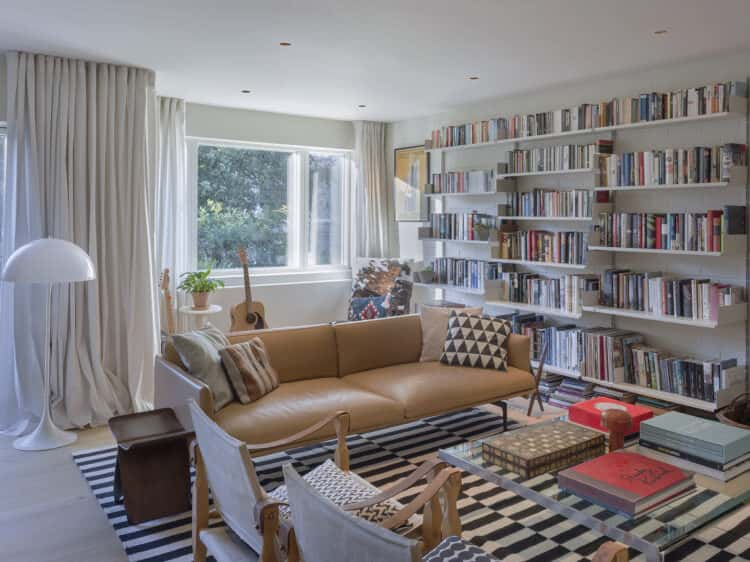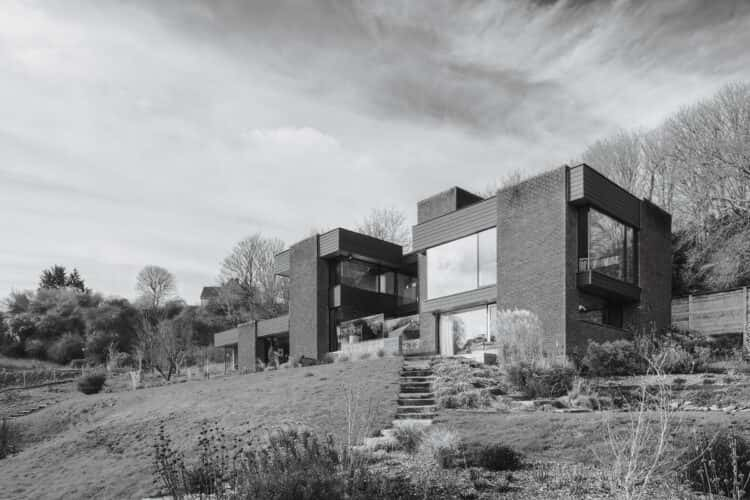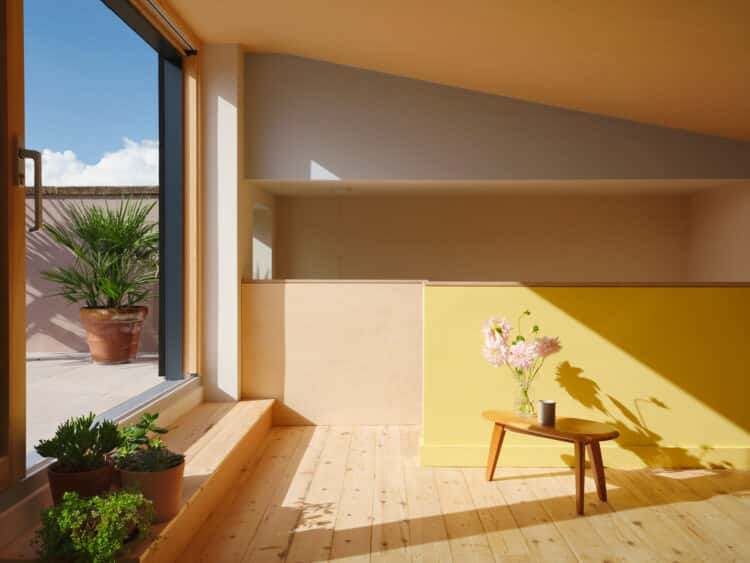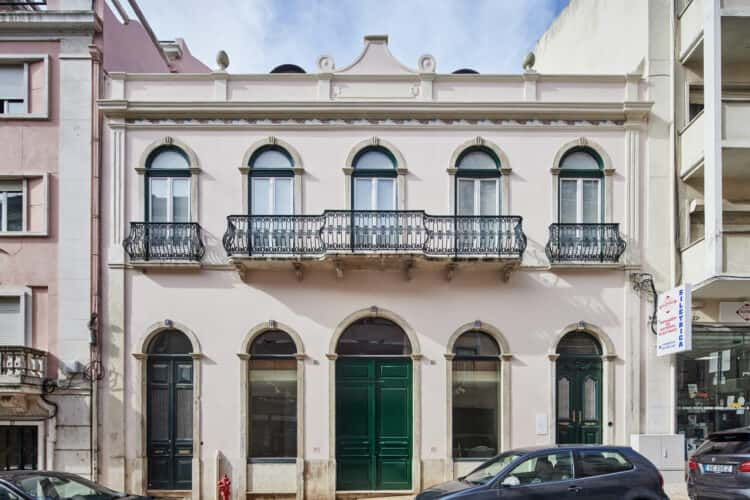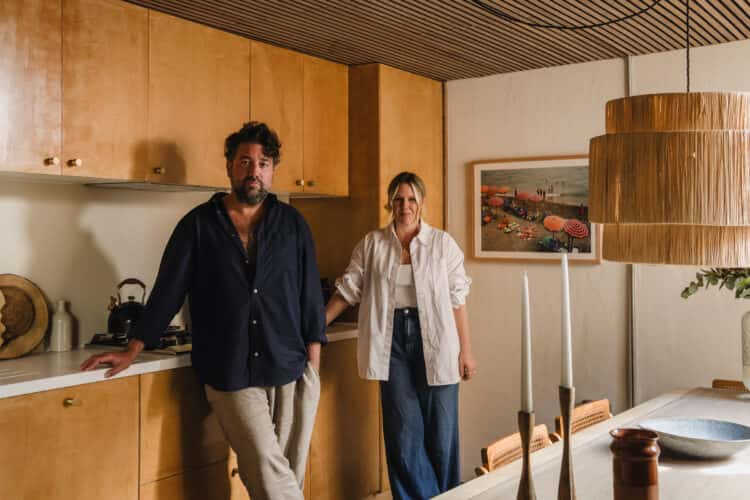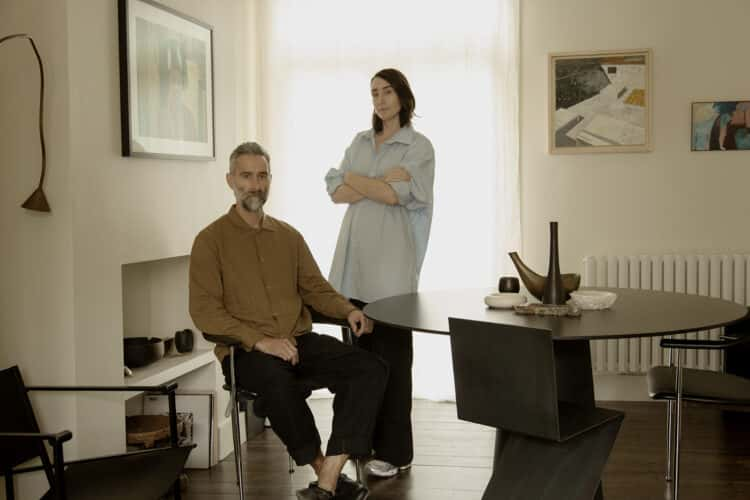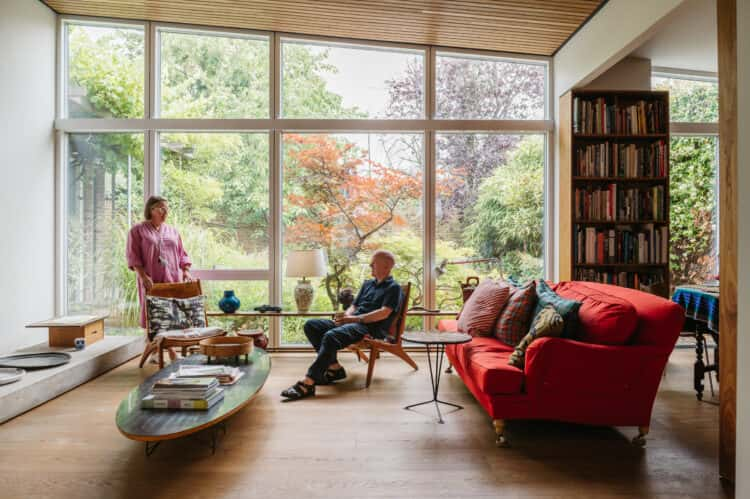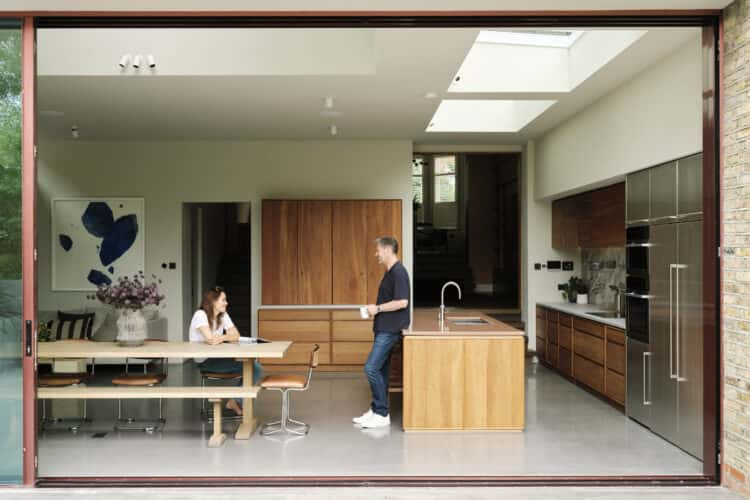The gentle brutalism of Upper Lawn, Alison and Peter Smithson’s rural retreat in the Wiltshire countryside
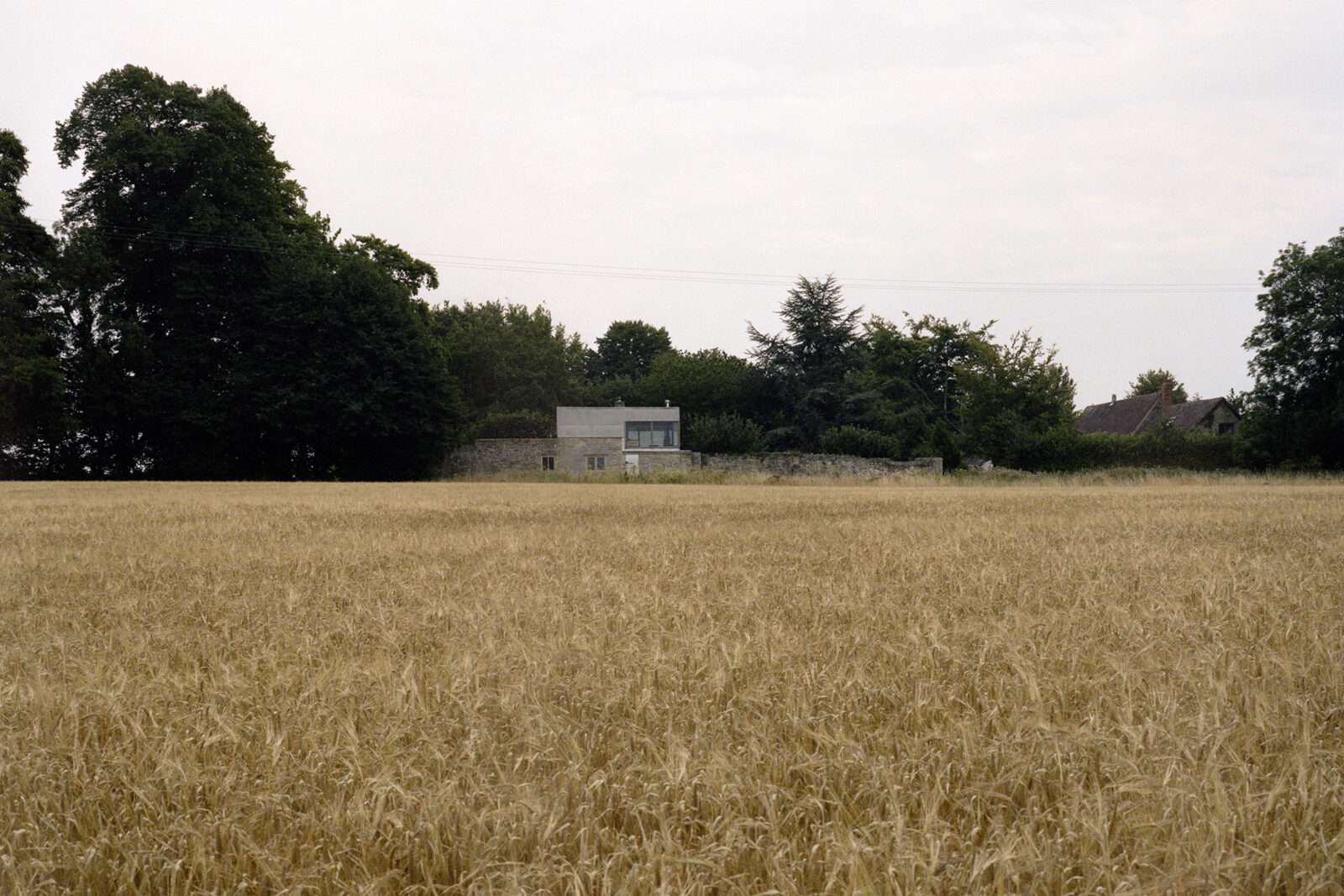
It was 1958 when Alison and Peter Smithson acquired Upper Lawn: a derelict thatched cottage with a demolition order. The house was one of a group of stone buildings set in the remains of an 18th-century farm worker’s yard, once forming part of ‘The Lawns’ on William Beckford’s estate at the edge of Fonthill Abbey. Upper Lawn, or Solar Pavilion as it was previously known, is perhaps the smallest project of the architect couple and pioneers of British brutalism – but this modest house in Wiltshire, their rural retreat for over two decades, came to embody some of their most significant ideas.
As Peter put it, Upper Lawn was “a device for trying things out on oneself”. Here, they trialled products and materials which were not yet permitted for use in London and explored concepts on a small scale; the most successful of which would later be applied to more expansive projects in the city.
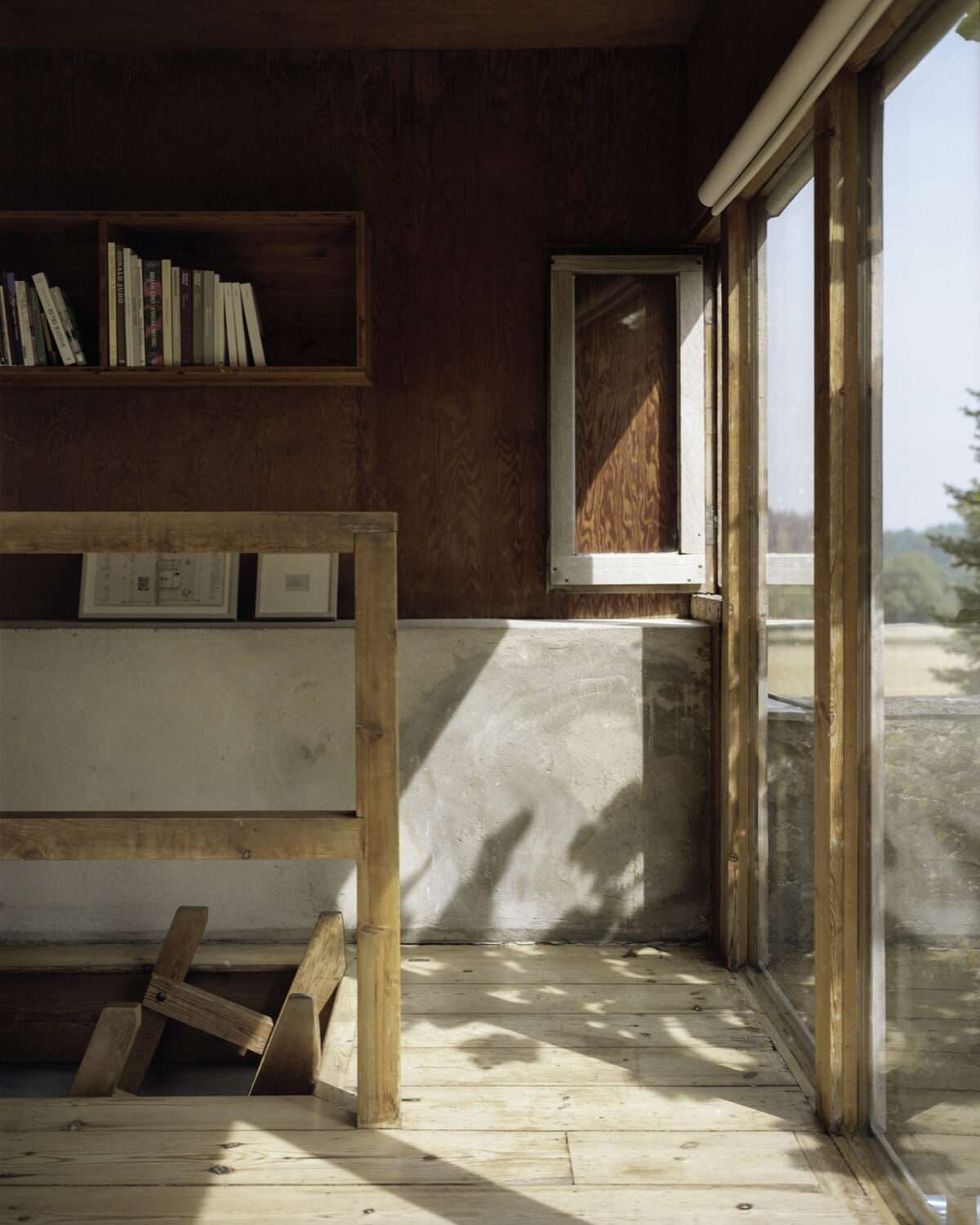
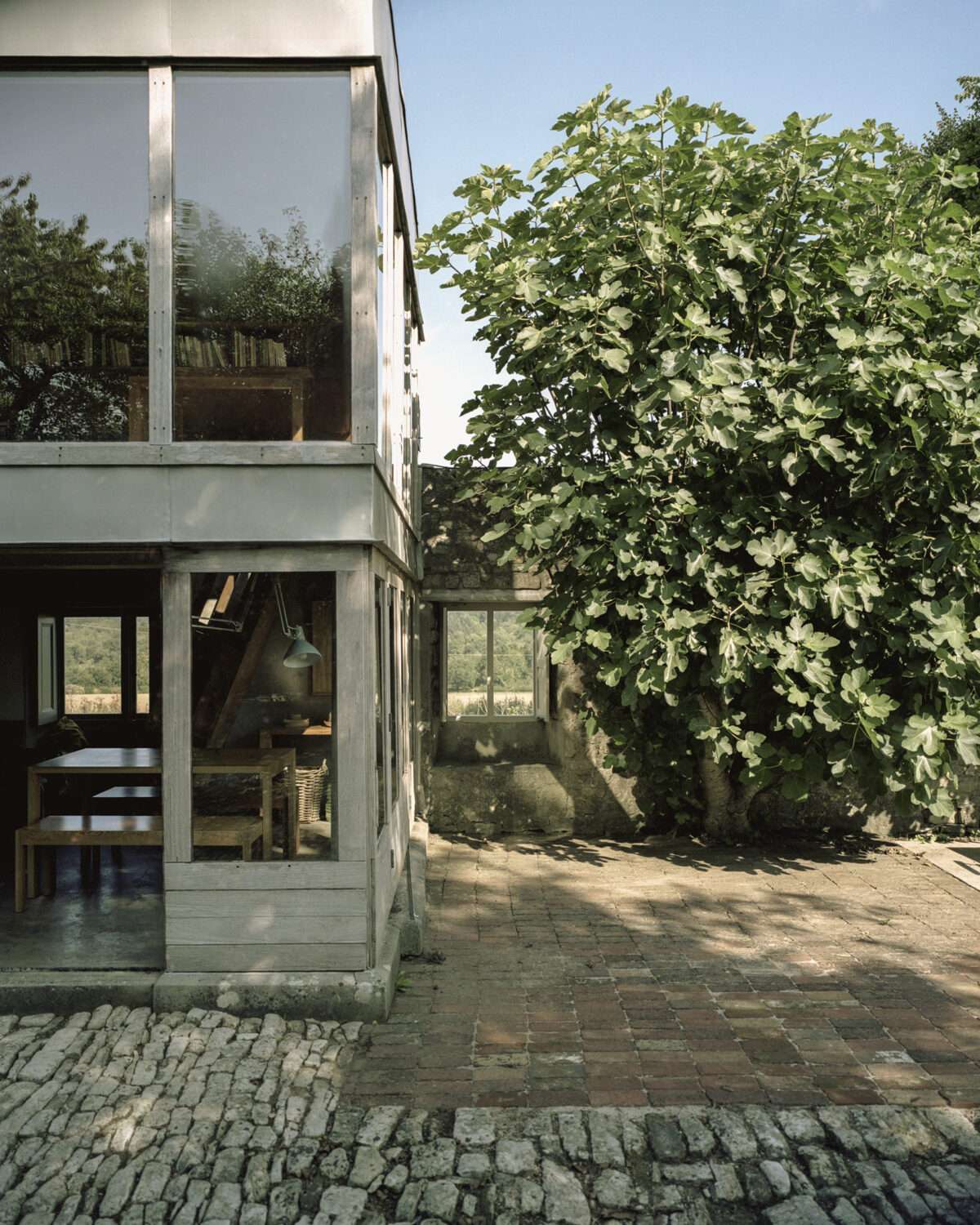
By 1960 Alison and Peter had built a two-storey pavilion onto Upper Lawn’s original stone walls. Rather than razing the structure, the existing elements were repurposed, encouraging new ways of looking at historical foundations.
The lower half of the original cottage provided a framework for the new floor-to-ceiling, timber-framed glass walls above; a spectacular piano nobile with an almost 360-degree panorama across the valley. Glazing was extensive, since experimentation in solar gain, which garnered varying levels of success, was a significant part of their process. They had aimed to create “a simple climate house” within which they could experience firsthand the inclement weather conditions of the English seasons.
The space was sparsely furnished, and they likened their way of living here to “camping in the landscape”. The kitchen had a sink and a dishwasher but no cooking facilities; instead, they cooked on a stove outside, and at night the whole family rolled out mattresses on the first floor to sleep. They completed their work in 1962 and enjoyed Upper Lawn as a counterpoint to the city; an English folly that their young family could retreat to enjoy a slower, rural pace of life.
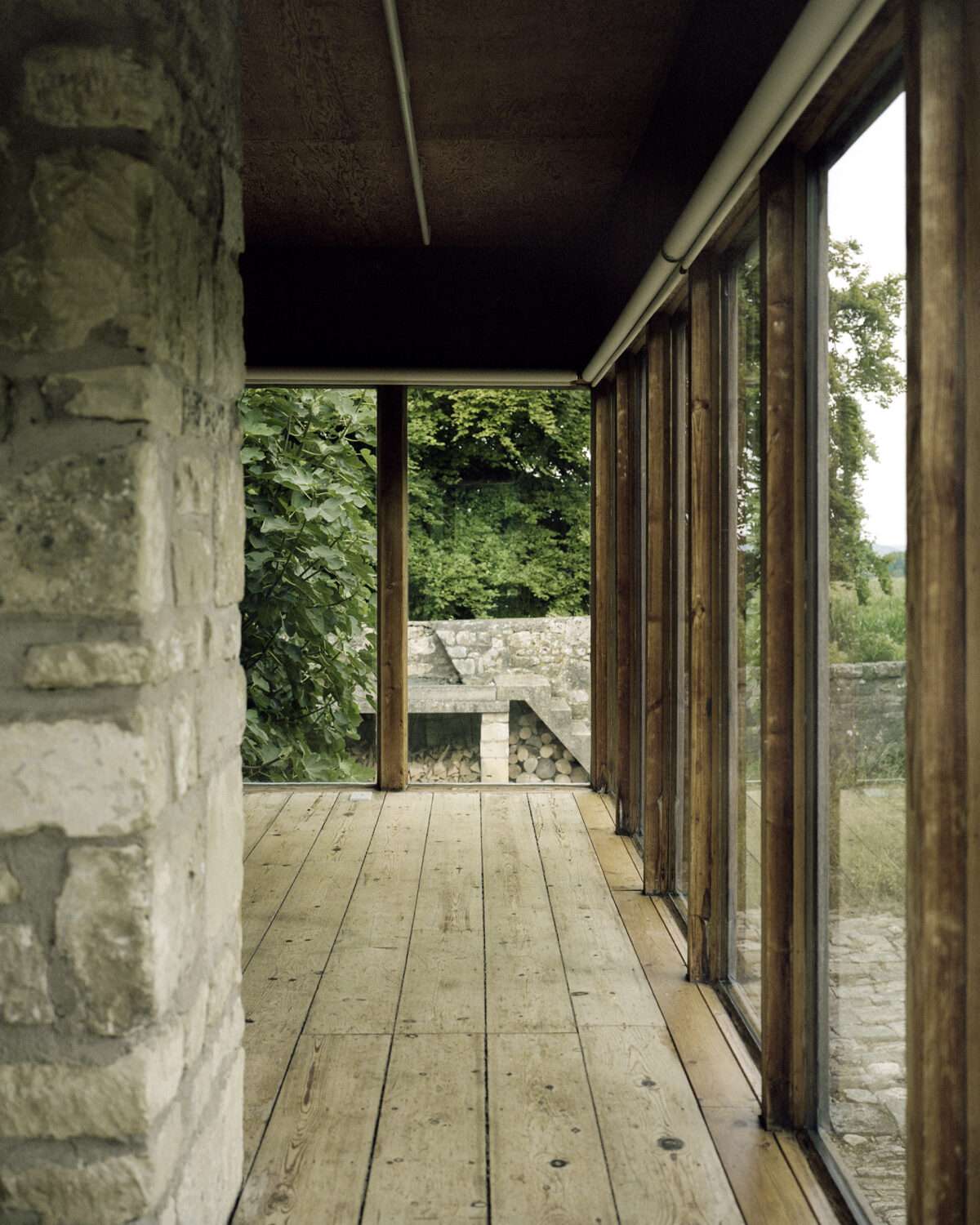
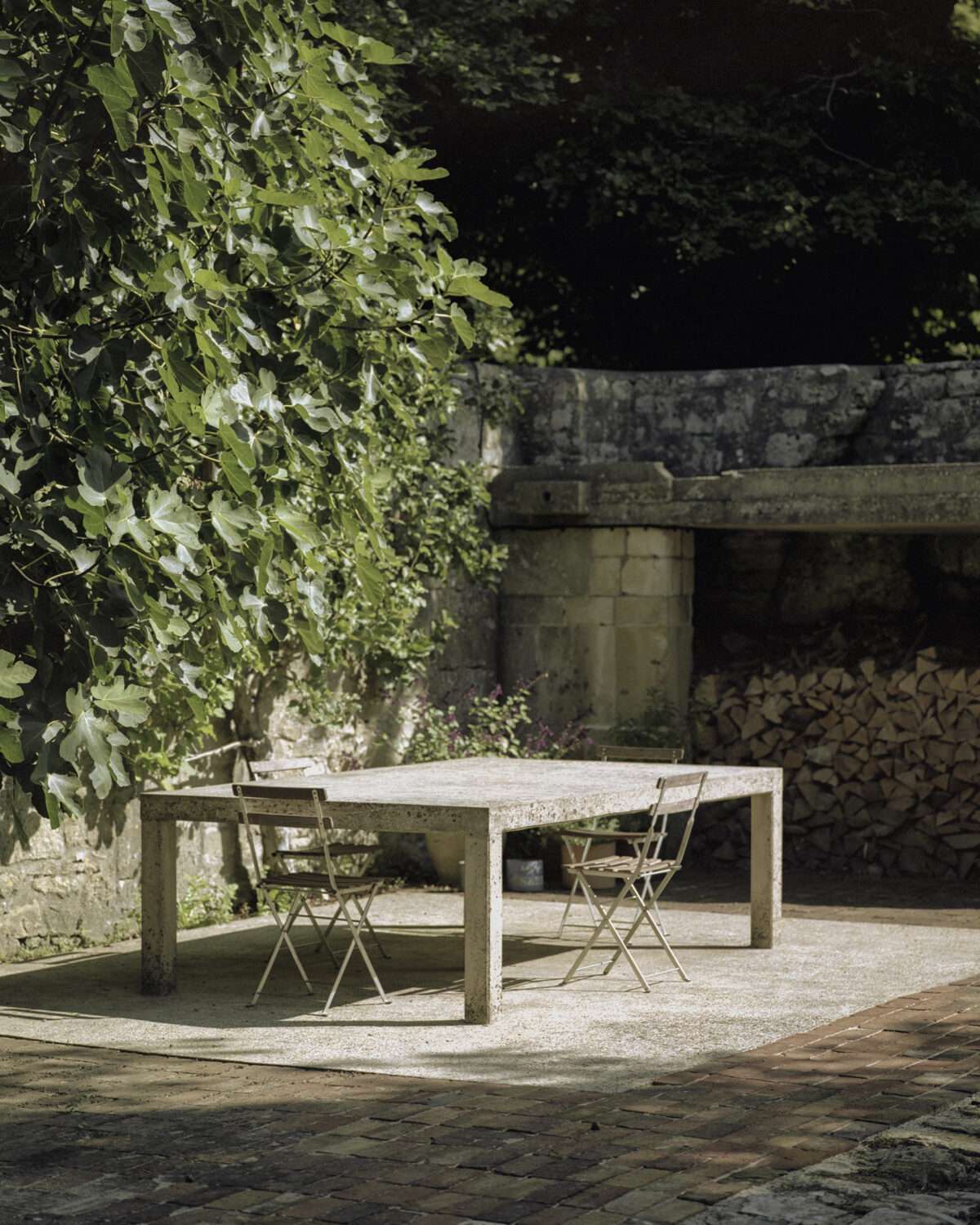
In 1982, the Smithsons decided to sell. Upper Lawn is now looked after by Ian and Jo Cartlidge, the third owners of the pavilion. “We were looking to buy somewhere in the country, and we received an email out of the blue about Upper Lawn,” recalls Ian. “Totally different to what we had envisaged, we were intrigued. We have an interest and a passion for architecture, so we knew of the Smithsons, but our knowledge was limited, and we were not aware of Upper Lawn. Jo and I visited, and we instantly fell in love with it.
“For two years, we used it as our weekend home; experiencing it, getting to know it, understanding it in a way which is only possible by living there. This process was key in determining the scope and nature of the renovation work it needed and to help strike the balance between new intervention and retention of the original.
“We wanted to embrace the original concept of the pavilion. The directness and rawness of the design and materiality, fundamental to New Brutalism, is at the very essence of Upper Lawn, and we were very careful to retain it. This time taught us that some of the things that we thought were necessary to change, or update, were perhaps not essential, and if the renovation was too radical, the essence of the house would be lost.
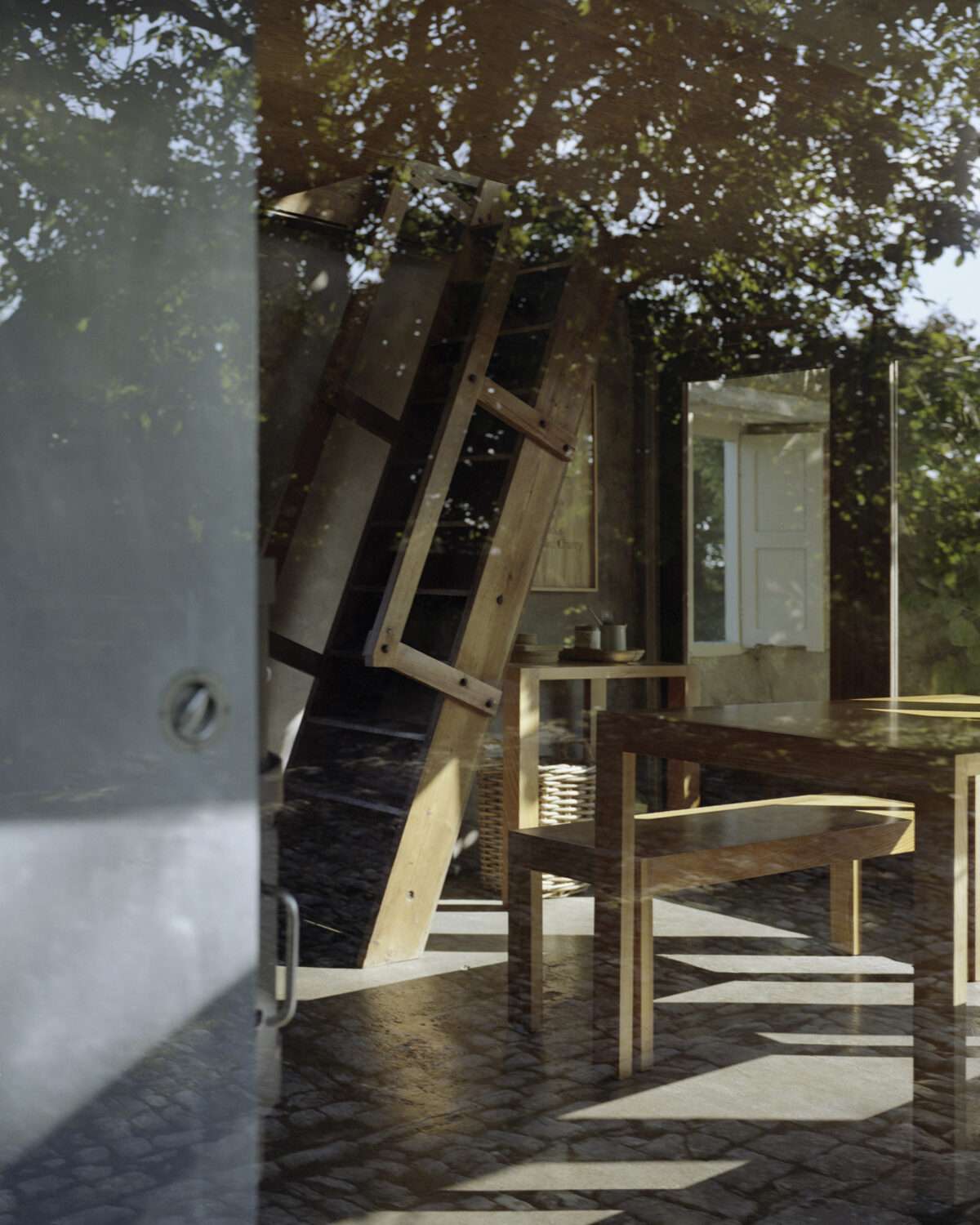
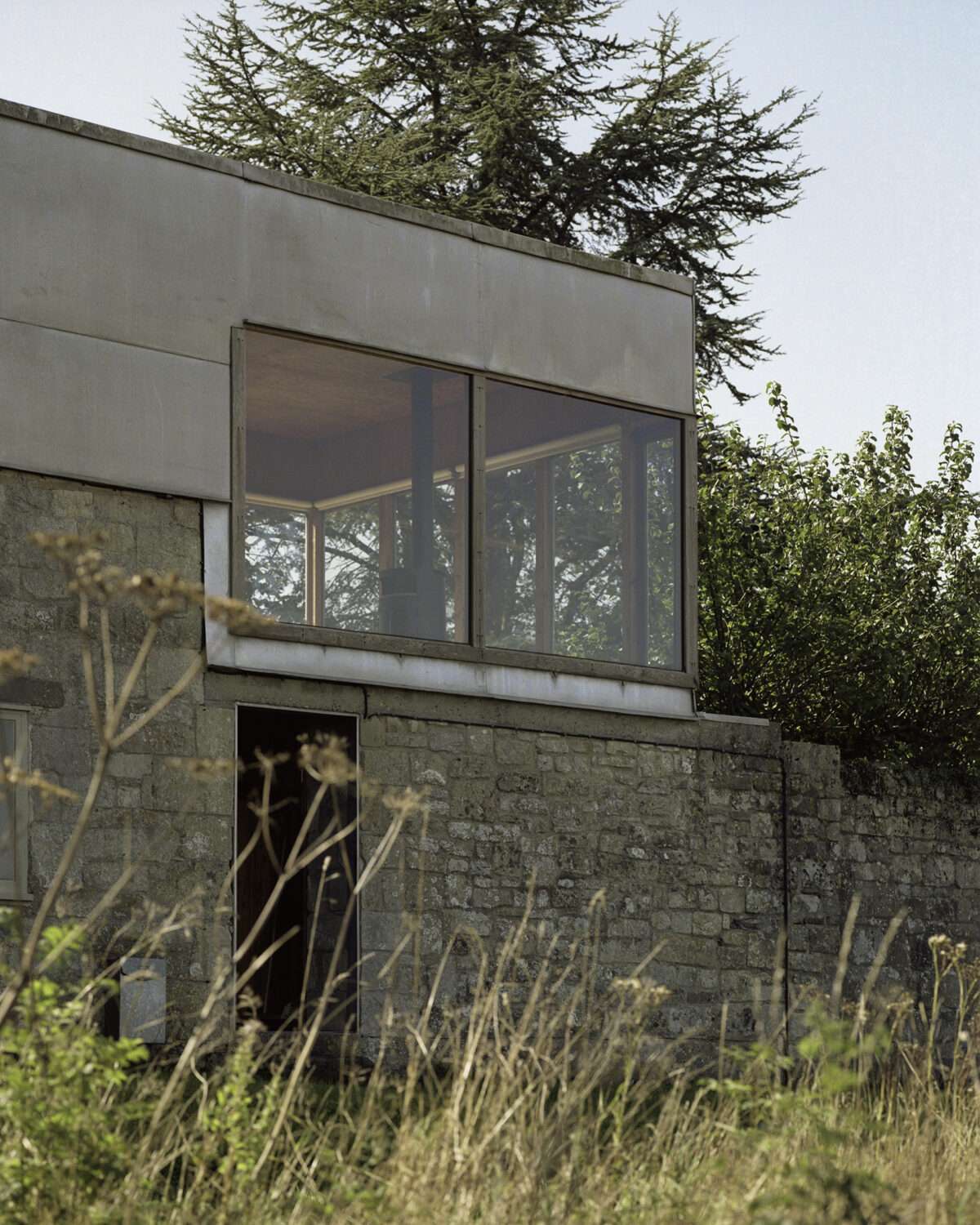
“There were two broad categories of work: that which had to be done to preserve the pavilion and garden, and work that we could do to increase the level of comfort. Some of the new interventions are very subtle and, in some cases, invisible. Jo and I came regularly to witness the house in various stages of dismantling and reassembly; it was so expertly carried out that if you hadn’t seen the work in progress, you would never know what had been done.
“The large windows were originally single-glazed – there are early photos showing the insides covered in heavy frost. The Smithsons embraced the primitive nature of the pavilion, they wanted to be ‘close to nature’ and experience the changing of the seasons in a way that is not possible in London. We wanted to be close to nature, too, but not quite as close! The previous owner had installed double-glazing upstairs, which we retained, and the ground floor glazing was replaced with modern, high-performance, toughened glass.
“An important feature that had been lost was the relationship between the pavilion and the terrace. The terrace was the former living room of the 18th-century cottage and is still complete with an inglenook fireplace (now a log store) and a casement window with shutters in the external wall. To restore the relationship, we had to remove the building. The renovation was carried out under the expert guidance of Sergison Bates architects. It was a memorable day when the work was done and the terrace was complete with a concrete table also designed by Sergison Bates.
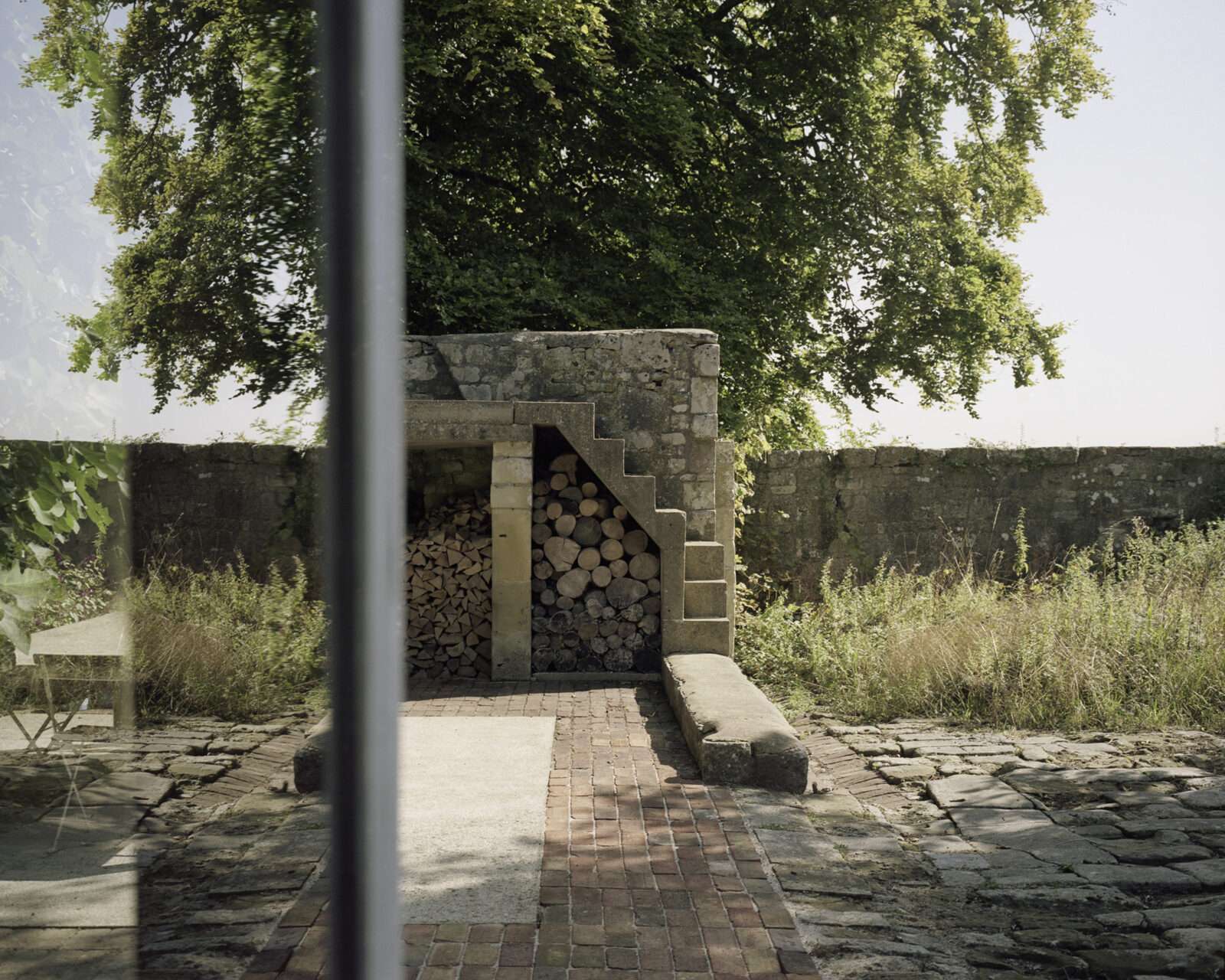
“The other primary element that required renovation was the garden. Many of its important features were lost to the undergrowth. Jo and I set about clearing the garden and yard; it was a hard but rewarding process, slowly returning the garden and its relationship to the pavilion to something closer to how it was during the Smithsons’ day.
“For such a small house there is so much written about it, but unless you actually live there you can’t fully understand or appreciate it. To experience Upper Lawn is to understand it; to sleep here, wake up here, see the changing weather coming over Fonthill Woods and Salisbury Plain, see the constantly changing light, see and hear the wildlife. To experience the different atmospheres in the pavilion and patio, the concrete floor and cement rendered walls of the ground floor, its connection to the garden, and the cosy, more intimate, Douglas Fir-lined rooms above.
“The rich surrounding landscape and spectacular views are very special. We often compare the pavilion to a wildlife hide. If you sit in the first-floor room, overlooking Fonthill Woods, you can watch the wildlife come up to the pavilion – deer, skylarks, lapwings, buzzards, hares, badgers, bats at dusk, owls in nearby trees at night.
“For the Smithsons, the location is as important as the building itself; they wanted to be part of this landscape and contribute to its story. The integration of these two contrasting worlds and time periods is achieved in a way that only the Smithsons could do; the reference to the past juxtaposed with an unapologetic modern building, resonates powerfully with the landscape and places Upper Lawn firmly in the rich history of Fonthill. It’s a special place that makes you want to return time and time again.”
